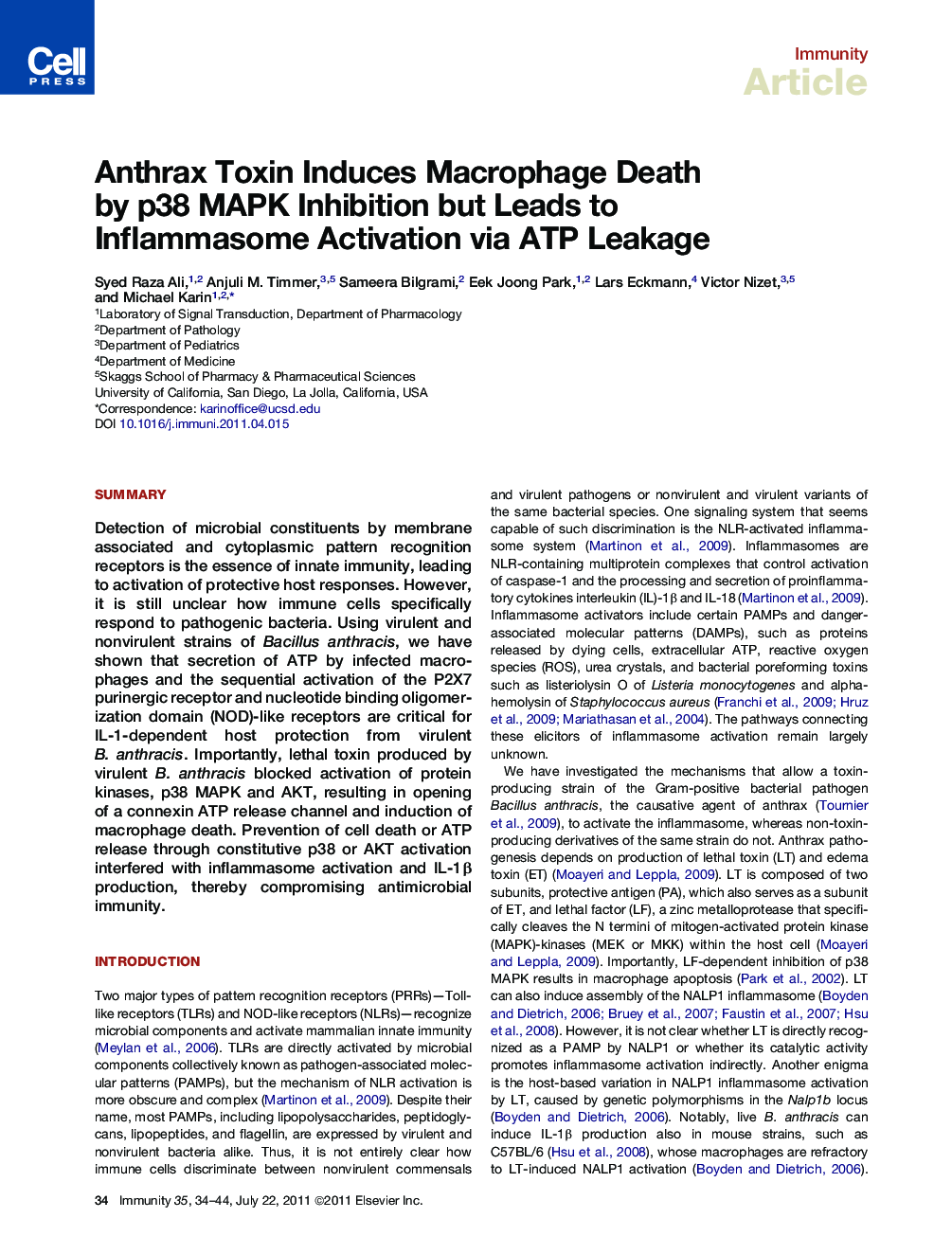| کد مقاله | کد نشریه | سال انتشار | مقاله انگلیسی | نسخه تمام متن |
|---|---|---|---|---|
| 3353372 | 1216853 | 2011 | 11 صفحه PDF | دانلود رایگان |

SummaryDetection of microbial constituents by membrane associated and cytoplasmic pattern recognition receptors is the essence of innate immunity, leading to activation of protective host responses. However, it is still unclear how immune cells specifically respond to pathogenic bacteria. Using virulent and nonvirulent strains of Bacillus anthracis, we have shown that secretion of ATP by infected macrophages and the sequential activation of the P2X7 purinergic receptor and nucleotide binding oligomerization domain (NOD)-like receptors are critical for IL-1-dependent host protection from virulent B. anthracis. Importantly, lethal toxin produced by virulent B. anthracis blocked activation of protein kinases, p38 MAPK and AKT, resulting in opening of a connexin ATP release channel and induction of macrophage death. Prevention of cell death or ATP release through constitutive p38 or AKT activation interfered with inflammasome activation and IL-1β production, thereby compromising antimicrobial immunity.
► Toxigenic B. anthracis inhibits p38 MAPK and AKT activation in infected macrophages
► AKT inhibition results in opening of the connexin 43 channel and ATP extrusion
► Extracellular ATP acts via P2X7 to induce K+ efflux and inflammasome activation
► Inflammasome-produced IL-1β facilitates clearance of B. anthracis infection
Journal: - Volume 35, Issue 1, 22 July 2011, Pages 34–44